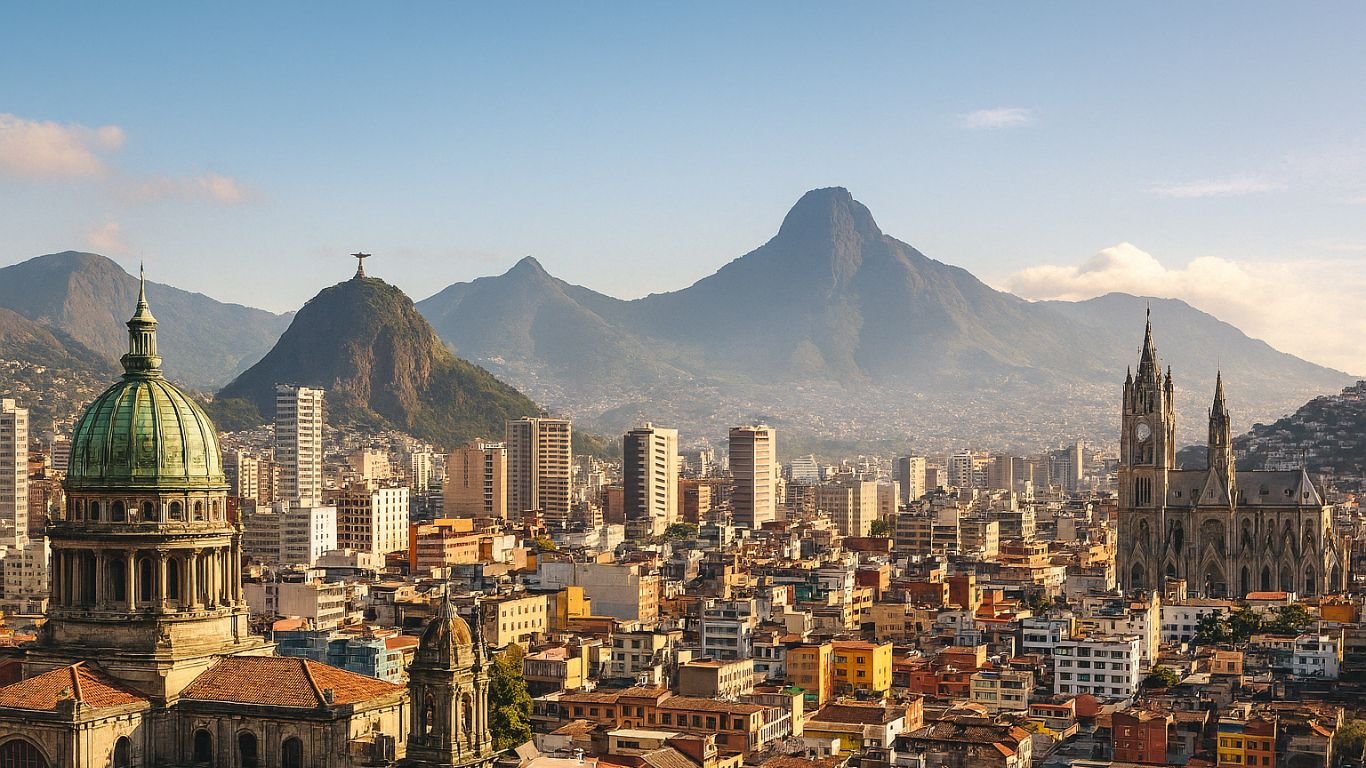Europe has long been the crown jewel of global travel — a patchwork of cultures, histories, and architectural marvels that seem almost too magical to be real. Yet beyond the glossy brochures and Instagram filters, certain cities truly live up to their mythologies. They are not just beautiful in snapshots; they are stunning in spirit, soul, and experience.
In this article, we delve into 12 of the most beautiful cities in Europe — destinations that continue to enchant visitors with their timeless elegance, rich history, and irresistible charisma. Each city on this list has been carefully selected based on a blend of personal experience, expert travel rankings, cultural prestige, and the genuine “wow” factor they evoke in travelers time and again. These are places where medieval streets whisper centuries-old secrets, where grand cathedrals pierce the sky, and where every sunset feels like a private masterpiece painted just for you.
Whether you are a seasoned traveler looking to rekindle your love for Europe or a first-timer seeking to experience the continent’s magic for the first time, these cities promise not just postcard-perfect moments but unforgettable journeys.
Let’s begin.
Table of Contents
1. Paris, France

Few cities in the world capture the imagination quite like Paris. The French capital has earned its place among the most beautiful cities in Europe, not through fleeting trends, but by cultivating an atmosphere of timeless romance, artistry, and grandeur. Walk along the banks of the Seine, and you’ll feel it immediately — the almost cinematic magic of a place that has inspired poets, painters, and dreamers for centuries.
The Eiffel Tower, often the first sight that comes to mind, still dazzles with its delicate iron latticework, especially when illuminated at night. Yet Paris’s true charm lies beyond its famous landmarks. The cobblestone streets of Le Marais, the elegant façades of Saint-Germain-des-Prés, and the leafy boulevards lined with historic cafés each tell a story of a city that reveres beauty in every form.
Statistically, Paris remains one of Europe’s most visited cities, welcoming over 30 million tourists annually (Statista, 2024). Despite its popularity, it manages to maintain a surprising intimacy, especially in quieter corners like Place des Vosges or the gardens of Musée Rodin. Visitors can explore countless world-class museums, from the Louvre to Musée d’Orsay, but just as powerful are the everyday Parisian moments — the art of sipping coffee at a sidewalk café, or watching boats drift past under centuries-old bridges.
From a personal perspective, what makes Paris remarkable is not only its monumental architecture but the feeling it evokes: a delicate blend of nostalgia, wonder, and joie de vivre. Every street corner seems tailored for a slow stroll, every sunset a reminder that beauty, here, is a birthright.
Actionable Tip: Skip the overly crowded Champs-Élysées and instead wander Rue Cler near the Eiffel Tower for authentic Parisian charm — bustling markets, artisanal bakeries, and quintessential French cafés.
2. Rome, Italy
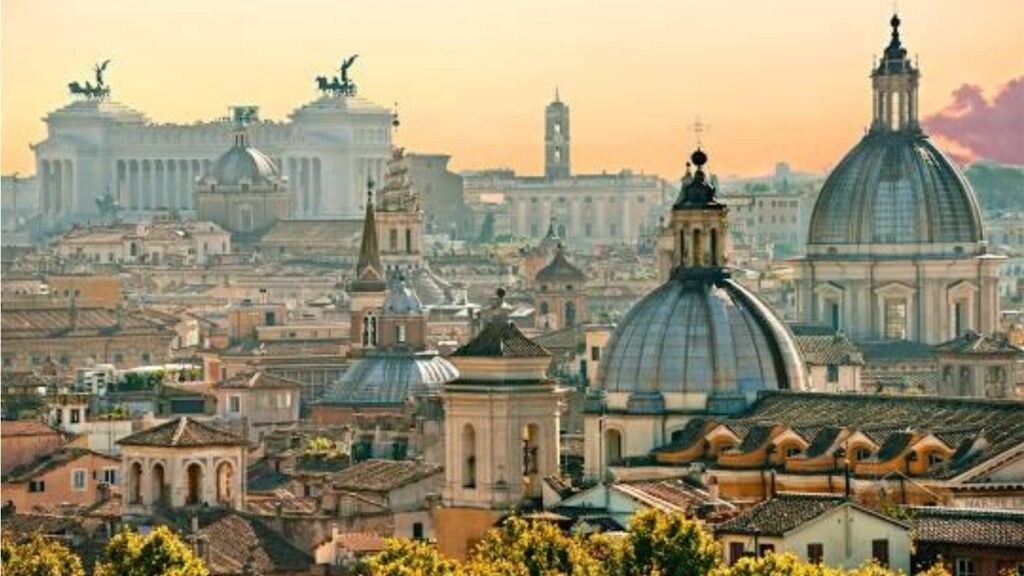
If Paris is the city of romance, Rome is the city of eternity. Known as the Eternal City, Rome doesn’t just belong on any list of the most beautiful cities in Europe — it defines what beauty, history, and grandeur truly mean.
Every step in Rome feels like walking through a living museum. From the awe-inspiring ruins of the Colosseum to the intricate frescoes of the Sistine Chapel, the city showcases over 2,500 years of continuous history. Piazza Navona, with its baroque fountains, and the Spanish Steps, climbing gracefully toward the Trinità dei Monti church, offer scenes so exquisite they seem plucked from a Renaissance painting.
Rome’s influence stretches far beyond Italy. As the cradle of Western civilization and the heart of the Roman Empire, the city shaped law, art, philosophy, and politics. Even today, it casts a spell: the scent of espresso wafting through narrow alleys, the soft splash of fountains in hidden courtyards, the sudden appearance of the Pantheon’s colossal dome around an ordinary corner.
According to data from the European Travel Commission, Rome remains among the top five most-visited cities in Europe, with millions drawn each year by its unparalleled cultural wealth. Yet despite the crowds around the Vatican and the Roman Forum, parts of Rome retain a serene, almost sacred tranquility — particularly in districts like Trastevere, where ivy-draped buildings and cobbled streets offer a more intimate Roman experience.
Personally, what sets Rome apart is the way beauty and life blend seamlessly. It’s not a museum locked behind glass; it’s a vibrant, living city where the ancient and the everyday coexist — where locals chat over pizza al taglio next to temples that have stood for millennia.
Actionable Tip: For a truly unforgettable sunset, climb up to the Orange Garden (Giardino degli Aranci) on Aventine Hill. You’ll catch sweeping views of Rome’s skyline with far fewer tourists than at the overcrowded Spanish Steps.
3. Prague, Czech Republic
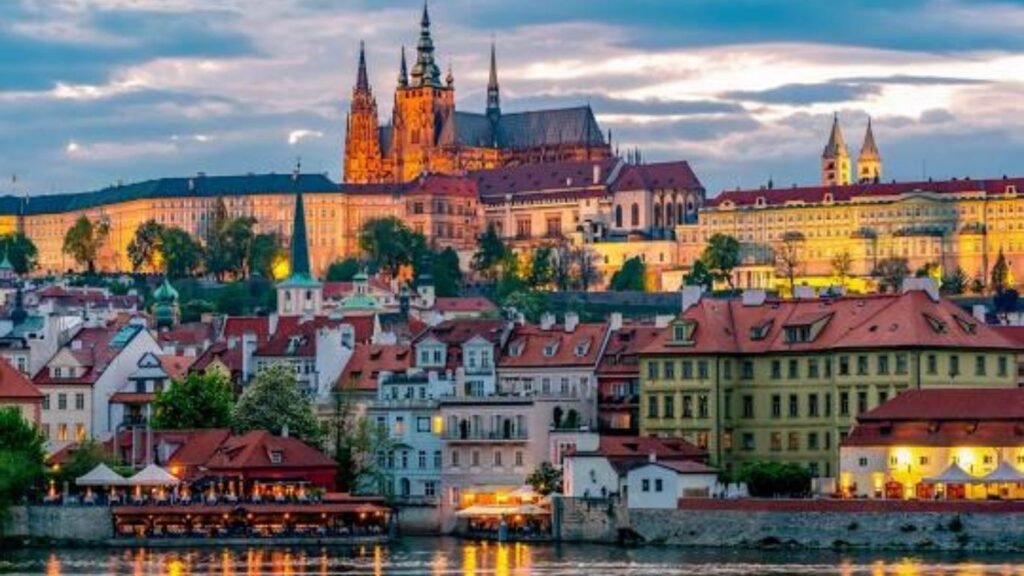
Prague is a masterpiece carved in stone — a city that feels untouched by time, yet very much alive. Often called the “City of a Hundred Spires,” Prague rightfully claims its place among the most beautiful cities in Europe, thanks to its fairytale architecture, cobblestone streets, and atmospheric riverbanks.
The heart of the city beats in the Old Town Square, where colorful Baroque buildings, the Astronomical Clock, and lively street performers create a scene straight from a storybook. Crossing the iconic Charles Bridge at dawn, with mist curling around its Gothic statues, is a memory that etches itself deeply into any traveler’s mind.
Prague’s skyline is a dramatic tapestry of spires, castles, and domes, crowned by the majestic Prague Castle — the largest ancient castle complex in the world, according to UNESCO. Yet beauty here is not only grand; it’s in the delicate details: the intricate carvings on a doorway, the hidden courtyards blooming with flowers, the golden glint of a narrow alley at sunset.
Tourism statistics show that Prague is consistently among the top ten European cities for international visitors, attracting over 8 million travelers per year (Czech Tourism Report, 2024). Despite its popularity, Prague offers countless pockets of peace. A simple stroll through the quieter Malá Strana district or an afternoon in Petřín Gardens can transport you into a world far removed from the crowds.
Personally, what makes Prague unforgettable is its atmosphere — a mixture of haunting history and unbreakable vitality. It’s a city where medieval ghosts dance alongside modern life, where every turn brings a new, breathtaking view.
Actionable Tip: Visit Prague in the early spring or late autumn to enjoy the city’s beauty without the heavy tourist traffic. Mornings are especially magical along the Vltava River.
4. Barcelona, Spain

Barcelona is a city where dreams are built in stone and color, where tradition and creativity fuse into something utterly unique. It has rightfully earned its place among the most beautiful cities in Europe, captivating visitors with a symphony of Gothic alleys, Modernist marvels, and a sun-drenched Mediterranean spirit.
The heartbeat of Barcelona is found in its art and architecture. Antoni Gaudí’s masterpieces — from the swirling façades of Casa Batlló to the soaring spires of the Sagrada Família — create an urban landscape like no other. Strolling through Park Güell feels like stepping into a whimsical mosaic, where serpentine benches and fantastical sculptures bask under blue Catalonian skies.
Yet Barcelona’s beauty extends beyond its architectural wonders. The historic Gothic Quarter (Barri Gòtic), with its labyrinthine streets and hidden plazas, invites endless exploration. The city’s coastline, lined with golden beaches and bustling promenades, offers a refreshing contrast to its dense, artistic center.
Statistically, Barcelona consistently ranks among the top ten European destinations, welcoming over 12 million international tourists annually (Catalonia Tourism Board, 2024). Its enduring appeal lies not just in its landmarks, but in the way the city breathes: vibrant markets like La Boqueria, lively tapas bars spilling onto the streets, flamenco guitarists performing under the stars.
From a personal perspective, Barcelona’s allure is the way it wears its soul on its sleeve. Here, beauty isn’t curated for show; it’s part of everyday life, from the colorful laundry fluttering above El Born’s alleyways to the intricate tilework in metro stations.
Actionable Tip: To truly savor Barcelona’s essence, visit the lesser-known neighborhood of Gràcia. It offers charming plazas, authentic Catalan eateries, and a local atmosphere without the overwhelming crowds of Las Ramblas.
5. Amsterdam, Netherlands
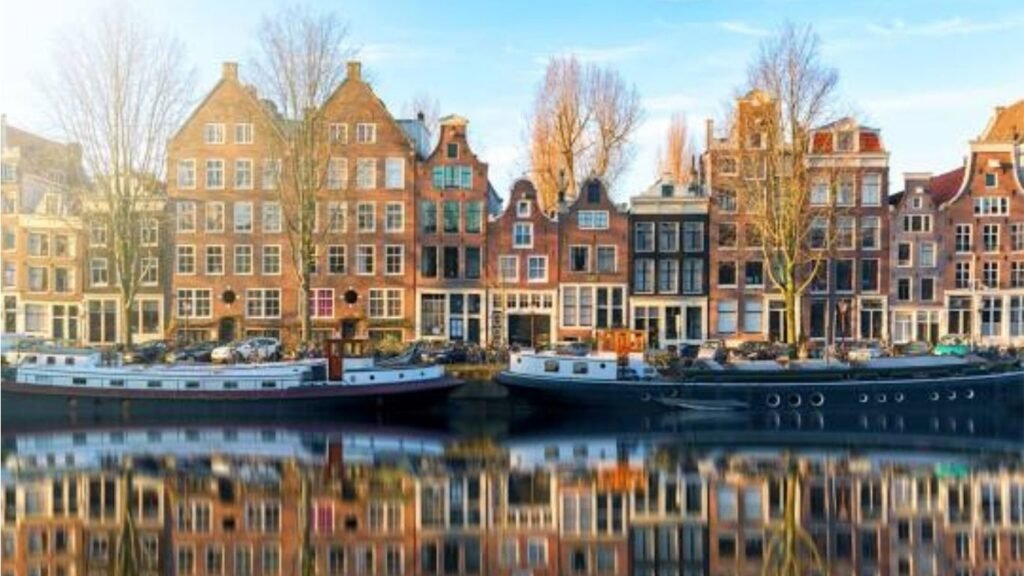
Amsterdam is a city that feels like a painting come to life — serene, charming, and irresistibly vibrant. Often recognized among the most beautiful cities in Europe, Amsterdam blends historic elegance with a modern, open-minded spirit that enchants every traveler lucky enough to explore its canals and courtyards.
At the heart of its beauty are the canals — over 100 kilometers of waterways framed by narrow, gabled townhouses that date back to the Dutch Golden Age. A leisurely canal cruise reveals the city’s best views, especially at twilight when the bridges glow softly under thousands of twinkling lights. UNESCO has even listed Amsterdam’s 17th-century canal ring as a World Heritage Site, underscoring its global cultural significance.
Beyond the water, the city’s beauty continues in the Jordaan district, where cobblestone streets, indie boutiques, and cozy cafés create a welcoming, village-like atmosphere. In springtime, Amsterdam bursts into color with its nearby tulip fields — an iconic symbol of Dutch artistry and a breathtaking sight in itself.
Tourism data from the Netherlands Board of Tourism shows that Amsterdam draws more than 20 million visitors annually. Despite its popularity, the city manages to retain a laid-back vibe, especially when explored by bicycle — the preferred mode of transport for locals and visitors alike.
From a personal view, what makes Amsterdam so special is its blend of introspection and openness. It’s a city where you can wander in quiet reflection along misty canals or join the joyful crowds celebrating King’s Day in a sea of orange. Beauty here is not loud; it’s soft, intricate, and deeply authentic.
Actionable Tip: Visit the Museumplein early in the morning to enjoy the masterpieces at the Rijksmuseum and Van Gogh Museum without the typical midday crowds. Renting a bike is also essential to experience Amsterdam like a true local.
6. Budapest, Hungary

Budapest is often called the “Pearl of the Danube,” and with good reason. Few cities blend architectural grandeur, thermal spas, and romantic river views quite like Hungary’s capital. It undeniably deserves its spot among the most beautiful cities in Europe, offering an intoxicating mix of history, culture, and elegance.
The city is essentially two in one: Buda and Pest, separated by the majestic Danube River and connected by a series of iconic bridges, like the stately Chain Bridge. On the Buda side, you’ll find rolling hills, the fairytale-like Fisherman’s Bastion, and the magnificent Buda Castle. Across the river, Pest hums with vibrant cafés, wide boulevards, and the awe-inspiring Hungarian Parliament Building — a Gothic Revival masterpiece often cited among Europe’s most beautiful government buildings.
Budapest’s beauty is not just skin deep. Beneath the city lie over 100 natural hot springs, feeding a network of ornate bathhouses. A visit to the historic Széchenyi or Gellért Baths is as much a cultural experience as it is a relaxing one. Floating in these thermal waters under soaring neo-baroque domes feels like stepping into another world.
According to Visit Hungary, Budapest welcomes over 4 million visitors annually, many captivated by the city’s stunning skyline, rich cultural calendar, and vibrant nightlife. Yet despite its growing popularity, Budapest remains refreshingly affordable compared to other major European capitals.
From personal experience, Budapest’s magic lies in its contrasts: the grandeur of illuminated bridges at night against the relaxed chatter of locals at a ruin bar; the silent reverence inside Matthias Church followed by lively outdoor concerts in city squares.
Actionable Tip: For an unforgettable view, hike up Gellért Hill around sunset. The panoramic vistas over the Danube, Parliament, and Buda Castle are among the most breathtaking scenes you’ll find in any of the most beautiful cities in Europe.
7. Vienna, Austria

Few cities can rival Vienna when it comes to imperial splendor and artistic legacy. The Austrian capital stands as a paragon of sophistication, easily ranking among the most beautiful cities in Europe. With its ornate palaces, grand boulevards, and world-class music heritage, Vienna feels both stately and soul-stirring.
The city’s heart beats along the Ringstrasse, a circular boulevard lined with opulent buildings like the Vienna State Opera, the Parliament, and the Burgtheater. Strolling here feels like wandering through a living exhibition of European architectural achievement. Beyond the grandeur, Schönbrunn Palace, with its sweeping gardens and Rococo design, offers a glimpse into the lavish lives of the Habsburg dynasty.
Vienna’s beauty, however, is not confined to its monuments. The city thrives in the quiet elegance of its coffee houses — UNESCO-recognized institutions where time slows, and patrons linger over thick slices of Sachertorte and philosophical conversations. Parks like the Stadtpark and Prater offer green respites, while the vibrant Naschmarkt invites visitors into a colorful world of tastes and aromas.
According to the 2024 European Cities Marketing Benchmarking Report, Vienna consistently ranks in the top five European cities for quality of life and cultural richness, attracting over 7 million international tourists annually. Yet despite its prestige, Vienna exudes an approachable warmth, a relaxed refinement that never feels overwhelming.
Personally, what makes Vienna unforgettable is its cadence: the soft clinking of porcelain cups in a café, the distant strains of a Mozart sonata wafting through open windows, the serene beauty of a tram ride at dusk. It’s a city that doesn’t demand your attention — it seduces it.
Actionable Tip: Book a ticket for a concert at the Musikverein’s Golden Hall, one of the world’s most beautiful concert venues. Even if you’re not an avid classical music fan, the acoustics and atmosphere are pure magic.
8. Seville, Spain
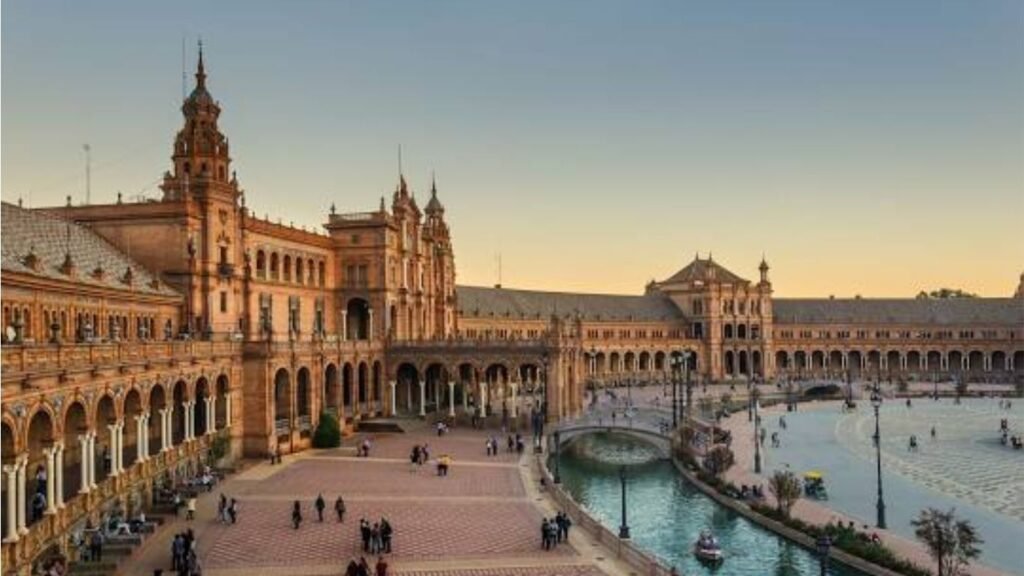
Seville is a city that glows from within, radiant with passion, history, and an undeniable sense of drama. With its fiery flamenco spirit, sun-drenched plazas, and stunning Moorish architecture, Seville proudly stands among the most beautiful cities in Europe — and easily one of the most captivating.
The city’s crown jewel is the Alcázar of Seville, a UNESCO World Heritage Site. This breathtaking palace complex, a fusion of Islamic, Gothic, Renaissance, and Baroque styles, stuns visitors with its intricate tilework, lush gardens, and ornate courtyards. Nearby, the Seville Cathedral — the largest Gothic cathedral in the world — looms with both grandeur and grace, housing the tomb of Christopher Columbus under its soaring, ribbed vaults.
Yet beauty in Seville isn’t limited to grand monuments. The city breathes it at street level: the delicate aroma of orange blossoms, the colorful ceramic tiles adorning old houses, and the passionate notes of flamenco echoing from hidden taverns. Wander through the labyrinthine lanes of the Santa Cruz district, and you’ll discover secluded squares, ivy-draped balconies, and centuries of layered stories.
Tourism data from Spain’s National Statistics Institute shows that Seville welcomed over 3 million visitors in 2024, a number steadily rising as more travelers seek out its authentic Andalusian charm. Despite its growing popularity, Seville retains a sense of local pride and a slower pace that allows visitors to truly savor its atmosphere.
Personally, what sets Seville apart is its emotional resonance. This is a city that doesn’t just impress you — it moves you. Whether watching a spontaneous flamenco performance in a tiny bar or seeing the golden sunlight play across the Plaza de España’s grand arches, Seville lingers long after you leave.
Actionable Tip: Visit Seville in the spring, when the city bursts into life with the Feria de Abril festival and the intoxicating scent of blooming orange trees. Early mornings at Plaza de España offer stunning photos with minimal crowds.
9. Lisbon, Portugal

Lisbon is a city that feels like a melody — a harmonious blend of golden light, rolling hills, and soulful history. Rising from the shores of the Atlantic, Portugal’s capital easily claims its place among the most beautiful cities in Europe, offering travelers a kaleidoscope of color, charm, and character.
The city’s beauty is immediately apparent in its setting: seven hills cascade down to the sparkling waters of the Tagus River, creating stunning panoramic views from every angle. The pastel-hued buildings of Alfama, Lisbon’s oldest district, seem to tumble down narrow, cobbled streets, their façades adorned with traditional azulejos — hand-painted ceramic tiles that tell stories of centuries past.
Iconic landmarks like the Belém Tower and Jerónimos Monastery, both UNESCO World Heritage Sites, showcase Lisbon’s maritime legacy and intricate Manueline architecture. Yet it’s the everyday scenes that captivate most: the clatter of vintage yellow trams winding up steep hills, the melancholic strains of fado music drifting from tiny taverns, the scent of fresh custard tarts (pastéis de nata) baking on a warm breeze.
Lisbon’s tourism numbers have surged in recent years, with the city welcoming over 5 million visitors annually (Visit Portugal Report, 2024). Still, Lisbon manages to retain an inviting authenticity, especially in lesser-visited neighborhoods like Graça and Mouraria, where local life continues largely undisturbed.
From personal experience, Lisbon’s magic lies in its light — a soft, golden luminosity that seems to imbue everything with a dreamlike quality. Sunsets viewed from one of the city’s many miradouros (viewpoints) are among the most unforgettable moments one can experience in any of the most beautiful cities in Europe.
Actionable Tip: For a quieter, more local experience, explore the LX Factory — a converted industrial complex now buzzing with artisan shops, cafés, and street art. It’s a refreshing alternative to the more tourist-heavy areas downtown.
10. Copenhagen, Denmark
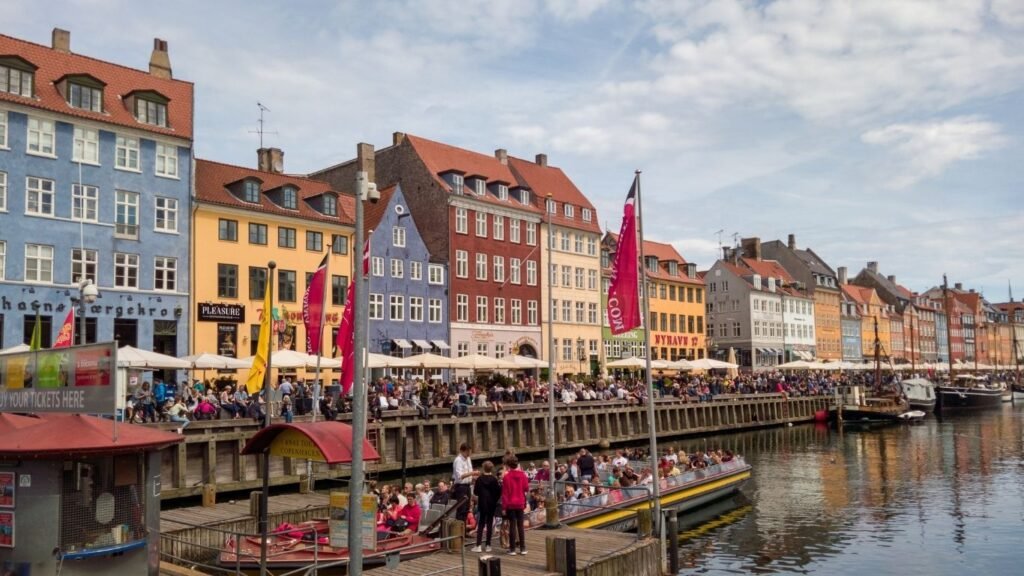
Copenhagen is where fairy tales breathe and modern innovation thrives side by side. Denmark’s capital ranks effortlessly among the most beautiful cities in Europe, blending centuries-old charm with a crisp, contemporary aesthetic that feels both fresh and timeless.
The city’s visual appeal begins at Nyhavn, the postcard-perfect harbor lined with brightly colored 17th-century townhouses. Historic sailing ships bob in the canal’s calm waters, while bustling cafés invite visitors to linger over a glass of wine or a plate of fresh smørrebrød. Just a short stroll away, the royal Amalienborg Palace and the elegant Marble Church add stately grandeur to Copenhagen’s already refined cityscape.
Copenhagen’s dedication to design and sustainability only enhances its beauty. Urban spaces like the Superkilen Park and the bicycle-friendly infrastructure show that functionality can be as visually stunning as tradition. Green spaces like the King’s Garden and the canals of Christianshavn offer peaceful respites amid the city’s clean, modern lines.
Tourism to Copenhagen continues to grow steadily, with over 4 million international visitors annually (Wonderful Copenhagen Tourism Report, 2024). It’s often cited as one of the world’s most livable cities, a reputation built on its commitment to harmony between urban life and nature — a quality that makes it stand out even among the most beautiful cities in Europe.
From personal experience, what makes Copenhagen unforgettable is its atmosphere of effortless joy. Whether biking alongside locals in the soft Nordic light, wandering through the dreamy grounds of Rosenborg Castle, or enjoying a laid-back afternoon at a waterfront café, the city feels welcoming, balanced, and quietly exhilarating.
Actionable Tip: Rent a bicycle and explore Copenhagen the way the locals do. Cycling along the lakes (Søerne) or through Fælledparken offers a relaxed, scenic way to experience the city’s most beautiful corners.
11. Dubrovnik, Croatia
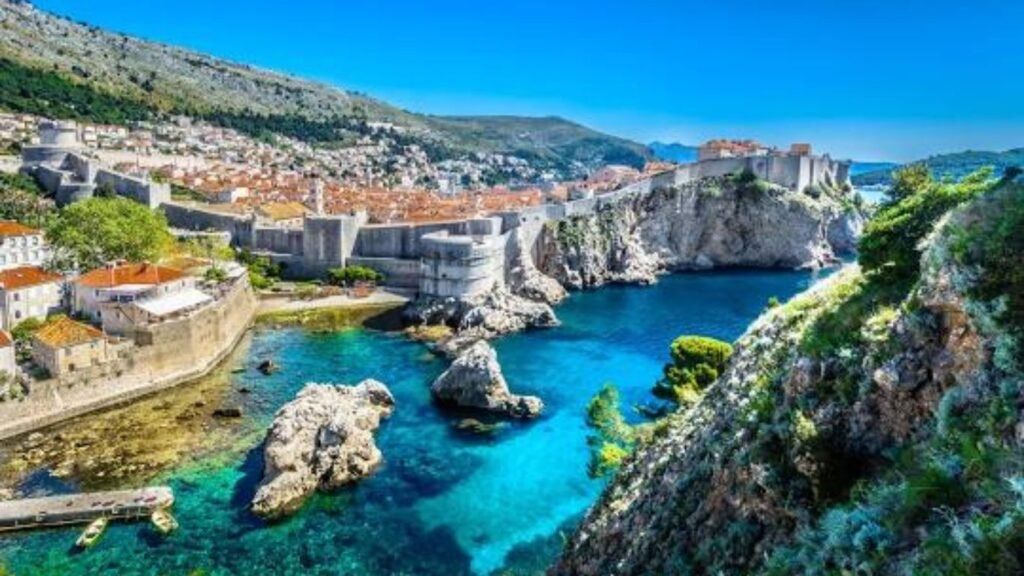
Dubrovnik is a city that seems plucked straight from a medieval dream — a radiant stone jewel set against the endless blue of the Adriatic Sea. Nicknamed the “Pearl of the Adriatic,” Dubrovnik has firmly secured its place among the most beautiful cities in Europe, dazzling visitors with its immaculate walls, baroque facades, and timeless seascapes.
The Old Town, encircled by 2 kilometers of perfectly preserved city walls, offers one of the most breathtaking urban landscapes in Europe. Walking atop these walls reveals sweeping views over terracotta rooftops, ancient fortresses, and the shimmering sea beyond. Landmarks like the Rector’s Palace, the Cathedral of the Assumption, and the graceful Sponza Palace showcase centuries of cultural richness and artistic excellence.
Beyond its historic core, Dubrovnik’s beauty spills onto its beaches and nearby islands. A short ferry ride to Lokrum Island or a kayak excursion along the coastline reveals quieter, equally stunning perspectives of this beloved city. Even after hosting millions of visitors drawn by its “Game of Thrones” fame, Dubrovnik retains an undeniable authenticity and pride.
Tourism in Dubrovnik has boomed, with the city welcoming around 1.5 million visitors annually (Croatian Bureau of Statistics, 2024). To preserve its fragile beauty, local authorities have introduced measures to limit cruise ship arrivals and promote sustainable tourism — a vital step to maintain its standing among the most beautiful cities in Europe for generations to come.
From personal experience, Dubrovnik’s most magical moments happen outside the busiest hours. Wandering the marble streets at sunrise or watching the sun set from Fort Lovrijenac offers an intimacy and serenity that few other places can match.
Actionable Tip: Visit in late spring or early autumn to enjoy the best weather without the overwhelming summer crowds. Take a cable car up Mount Srđ for a panoramic sunset view that will stay etched in your memory forever.
12. Bruges, Belgium

Bruges feels like a dream you don’t want to wake from — a perfectly preserved medieval city of meandering canals, Gothic spires, and timeless tranquility. Tucked into the heart of Flanders, Bruges stands without question among the most beautiful cities in Europe, offering a rare, almost surreal glimpse into the past.
The beauty of Bruges reveals itself immediately as you wander its winding, cobblestone streets. The Markt Square, dominated by the soaring Belfry of Bruges, sets a dramatic stage with colorful gabled houses and horse-drawn carriages clip-clopping over centuries-old stones. The canals — often called the “Venice of the North” — weave a spellbinding tapestry of reflections and ivy-clad facades, especially magical in the soft morning mist.
Historic landmarks abound: the Basilica of the Holy Blood houses a revered relic said to contain drops of Christ’s blood, while the Gruuthuse Museum and the Church of Our Lady showcase art and architecture that span the city’s golden medieval age. Every corner of Bruges tells a story, from the peaceful beguinages to the charming bridges that arch gracefully over mirror-like waters.
Bruges attracts over 8 million visitors annually (Visit Flanders Report, 2024), yet manages to maintain an almost ethereal calm, especially outside peak summer months. Its small size encourages slow exploration — exactly how it should be savored.
From personal experience, Bruges isn’t merely beautiful in a visual sense; it’s atmospheric, nostalgic, and profoundly soothing. Few cities invite you to slow down, breathe, and simply absorb the surroundings the way Bruges does. It reminds you that true beauty often lies in the details — a quiet courtyard, a rippling canal, a lone swan gliding silently by.
Actionable Tip: Stay overnight in Bruges rather than visiting as a day trip. The city transforms in the evening when the day-trippers leave, and the softly lit canals and empty squares create a hauntingly beautiful, unforgettable experience.
Conclusion
Europe’s enduring allure lies not just in its landmarks, but in the living, breathing soul of its cities. Each of the places we’ve explored — from the golden glow of Lisbon’s hills to the dreamy canals of Bruges — represents more than just beauty; they offer a profound sense of history, culture, and connection that few other continents can rival. These are the most beautiful cities in Europe that not only look spectacular in photographs but feel even more extraordinary in person.
What truly elevates these destinations is how they embrace their heritage while inviting the future — a delicate balance that ensures they remain vibrant, meaningful, and authentic. Whether you’re drawn to the romantic boulevards of Paris, the regal palaces of Vienna, or the sun-dappled alleys of Seville, one thing is certain: each of these cities promises memories that will linger long after your journey ends.
From personal experience, the magic of the most beautiful cities in Europe isn’t just in their monumental sights. It’s in the small, unexpected moments: a hidden courtyard bathed in afternoon light, a quiet melody echoing down an old alley, the smell of fresh pastries wafting through the morning air. These are the details that transform a trip into a lifetime memory.
As you plan your next European adventure, let these cities be your guide. They are the places that live up to every bit of their acclaim — and then some.
FAQ
What are the most beautiful cities in Europe for first-time travelers?
For first-time travelers, Paris, Rome, and Prague are excellent starting points. These cities combine iconic landmarks, rich history, and accessible tourism infrastructure, making them ideal for an unforgettable European introduction.
Which city in Europe has the most beautiful architecture?
Vienna often claims this title with its breathtaking blend of Baroque, Gothic, and Art Nouveau styles. However, cities like Prague, Budapest, and Barcelona also stand out for their architectural splendor.
Are the most beautiful cities in Europe very crowded?
Many of the most beautiful cities in Europe can become crowded, especially during peak travel seasons like summer and major holidays. Visiting in the shoulder seasons — spring and autumn — offers a more relaxed experience without sacrificing the atmosphere or beauty.
What is the best time of year to visit the most beautiful cities in Europe?
Spring (April–June) and autumn (September–October) are ideal times to visit. During these months, you’ll find milder weather, fewer crowds, and a more authentic glimpse into local life in cities like Lisbon, Copenhagen, and Seville.
How can I avoid tourist traps in Europe’s most popular cities?
Researching local neighborhoods, visiting early in the morning, and exploring beyond major tourist zones can help you experience a more genuine side of the most beautiful cities in Europe. Connecting with locals through tours or cultural activities can also enrich your visit.
Are these cities expensive to visit?
Cities like Paris and Copenhagen can be expensive, but others like Budapest, Lisbon, and Seville offer a more budget-friendly European experience without compromising on beauty. Planning ahead and looking for local deals can help you enjoy any of the most beautiful cities in Europe affordably.
Which lesser-known beautiful cities in Europe are worth visiting?
While the focus here has been on more renowned destinations, cities like Porto (Portugal), Ghent (Belgium), and Ljubljana (Slovenia) are stunning yet less touristy options that deserve more attention among Europe’s finest.

